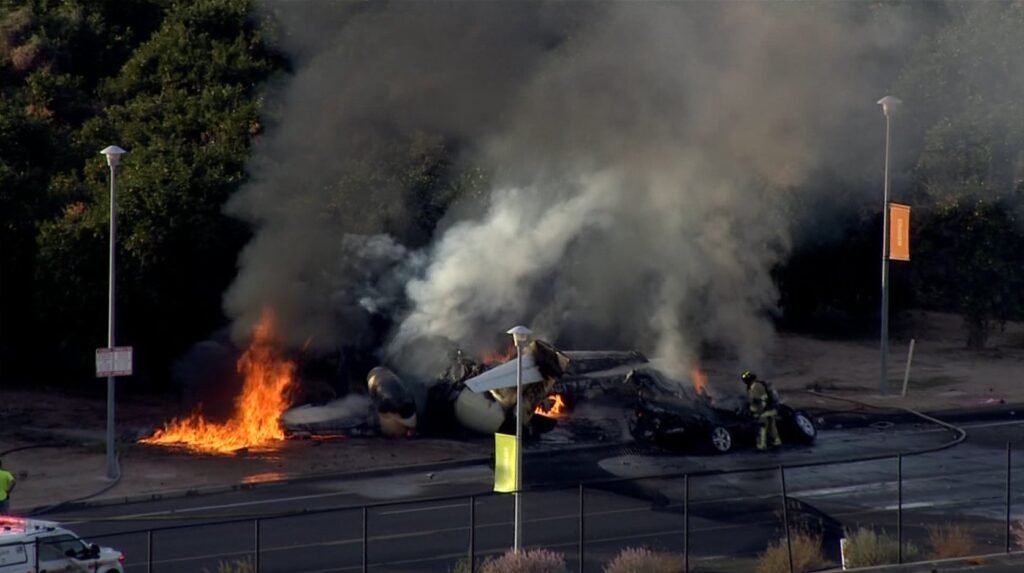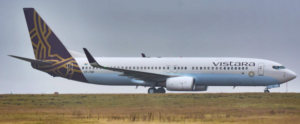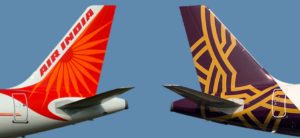The Legacy of Vistara: A Journey Through India’s Skies
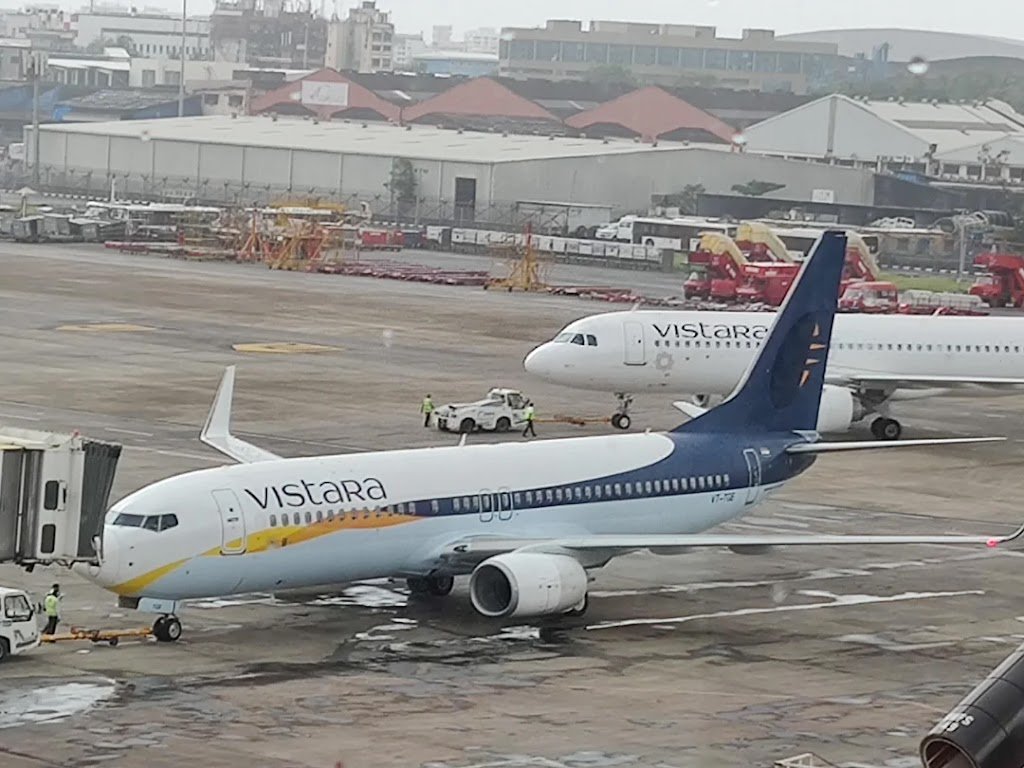
 |
| vistara logo |
Since its inaugural flight in 2015, Vistara has established itself as a distinguished player in India’s aviation landscape. Known for its exceptional service and strong partnerships, this airline’s journey is a story of passion, innovation, and a dedication to quality. As Vistara prepares to merge with Air India, it leaves behind an indelible legacy in Indian aviation, one that travelers will cherish for years to come. Let’s explore Vistara’s journey, highlighting key milestones, fleet developments, and the brand experience that won the hearts of millions.
Beginnings: The Arrival of Vistara’s Airbus A320ceos
 |
| PHOTO: Planespotters |
.
Vistara’s journey began with the Airbus A320ceo. The airline’s first aircraft, registered as VT-TTB, marked the start of a new era in Indian aviation. Powered by IAE V2500 engines, the A320ceo played a crucial role in establishing Vistara’s early operations. With 13 A320ceos, Vistara developed a reputation for comfort, punctuality, and reliability. For years, these aircraft served as the backbone of the airline’s domestic network, making Vistara a trusted name among Indian travelers.
By 2022, Vistara decided to phase out the older A320ceos to make way for more fuel-efficient, next-generation models. This strategic decision underscored Vistara’s commitment to efficiency, sustainability, and passenger comfort.
A New Generation: The Introduction of the Airbus A320neo
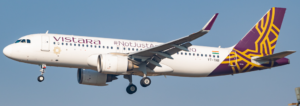 |
| PHOTO: Planespotters |
In 2017, Vistara introduced the Airbus A320neo to its fleet, marking a new chapter in its growth. This wasn’t just any aircraft addition; Vistara’s A320neo fleet brought a distinct upgrade to the passenger experience. The first A320neo, registered as VT-TNB, was outfitted with mood lighting—a unique touch that elevated the cabin ambiance and made Vistara flights feel special.
Adding to the distinctiveness of this aircraft, VT-TNB carried a unique decal with a message reflecting the airline’s heritage: “Brought to you by Tata and Singapore Airlines.” On the opposite side, the hashtag #NotJustAnotherNeo further underscored the airline’s commitment to innovation and excellence. Over time, Vistara’s neos introduced new conveniences like USB charging ports and tablet/mobile holders, enhancing the in-flight experience. Equipped with CFM LEAP 1A engines, these aircraft contributed to fuel efficiency, making Vistara’s operations more sustainable. Today, Vistara operates 53 A320neo aircraft, including 46 with a three-cabin layout and seven in an all-economy configuration.
With the upcoming merger, questions arise about whether these all-economy neos will be transferred to the Air India Express fleet. While the future remains uncertain, these aircraft embody Vistara’s vision for efficient, passenger-centered service.
Celebrating the Tata Legacy: Vistara’s “RetroJet”
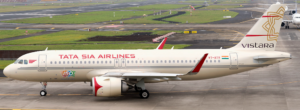 |
| PHOTO: Planespotters |
To commemorate 150 years of the Tata Group, Vistara unveiled a unique tribute to its heritage. One of its A320neos, registered as VT-ATV, was painted in a retro livery reminiscent of the original Tata Airlines DC-3. This aircraft, affectionately known as “RetroJet,” became a flying symbol of the Tata Group’s legacy in Indian aviation, dating back to the early days of Tata Airlines. This tribute not only honored the Tata legacy but also connected passengers with India’s rich aviation history.
Responding to Demand: The Jet Airways Lease
After Jet Airways ceased operations in 2019, Vistara saw an opportunity to expand its capacity and address increased demand. To achieve this, the airline leased nine of Jet Airways’ aircraft. Initially, these planes bore a hybrid livery, with a mix of Jet Airways’ design elements and a simple Vistara decal. However, they were eventually repainted in full Vistara colors and became integral to Vistara’s fleet until 2023. This strategic move allowed Vistara to grow its market presence, reach more destinations, and accommodate more travelers, further solidifying its status as a leading airline in India.
Going Global: Vistara’s First Long-Haul Aircraft, the Boeing 787-9 Dreamliner
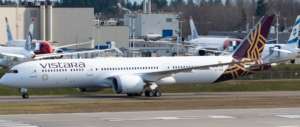 |
| PHOTO: Planespotters |
Vistara took a significant step into the international market with the acquisition of the Boeing 787-9 Dreamliner in early 2020. The Dreamliner, registered as VT-TSD, marked a milestone as Vistara became India’s first airline to operate this advanced aircraft model. Known for its spacious cabins, large windows, and reduced cabin noise, the 787-9 Dreamliner offered passengers a superior long-haul experience.
Today, Vistara operates seven Dreamliners, which are primarily used for international routes to Europe, Asia, and beyond. This move allowed Vistara to establish itself on a global scale and compete with major international airlines, delivering a blend of comfort and luxury that few Indian carriers could match.
Introducing the Airbus A321neo with Flat-Bed Business Class
In July 2020, Vistara continued to enhance its fleet with the arrival of its first Airbus A321neo, registered as VT-TVA. This aircraft was a game-changer in the Indian aviation market, as it was the first to offer a flat-bed business class, setting a new standard for domestic and regional flights. With a total of 10 A321neos in its fleet, Vistara offered an unparalleled level of comfort, catering to the growing demand for premium service in Indian aviation. This addition was particularly appealing to business travelers, who valued the airline’s focus on comfort and productivity.
The Merger with Air India: Preserving the Vistara Experience
As Vistara prepares to merge with Air India, many loyal customers feel bittersweet emotions. For many travelers, Vistara has been more than just an airline; it’s been an experience marked by exceptional service, attention to detail, and a sense of familiarity and warmth in the skies. Although the Vistara brand will eventually be retired, Air India has announced that it will preserve the Vistara experience until March 2025, ensuring that the legacy continues for a little while longer.
The merger represents a significant shift in Indian aviation, bringing together two of the nation’s most beloved airlines. It also signals the end of an era for Vistara’s dedicated travelers, who will miss the airline’s distinctive purple and gold branding, high standards, and seamless service. However, as Air India takes on the responsibility of integrating Vistara’s values, there is hope that the spirit of Vistara will live on, even as the two airlines join forces.
Vistara’s Legacy: A Lasting Impact on Indian Aviation
Vistara has left an indelible mark on Indian aviation. From its commitment to passenger comfort to its innovative fleet choices, the airline raised the bar for quality and service in Indian skies. It set new standards for domestic travel with its three-cabin configuration, mood-lit cabins, and flat-bed business class. Internationally, the introduction of the Boeing 787-9 Dreamliner demonstrated that an Indian airline could compete with the best in the world.
The airline’s cultural impact cannot be overstated. Vistara became synonymous with warmth, luxury, and reliability, traits that resonated deeply with travelers. The iconic tagline “Fly the New Feeling” captured the essence of Vistara’s mission, bringing a sense of pride to Indian skies and redefining expectations for air travel within the country.
Vistara: A Legacy in Indian Aviation
Vistara’s journey, from its first A320ceo to its eventual merger with Air India, has been marked by remarkable growth, innovation, and an unwavering commitment to excellence. Though the brand will soon retire, the memories and experiences it has created will continue to resonate with passengers.
As Air India carries forward the legacy, there’s hope that the values, standards, and spirit of Vistara will live on, enriching the Indian aviation landscape for future generations.
A Testament to Vision and Quality
The story of Vistara is more than a chapter in aviation; it stands as a testament to the vision of Tata and Singapore Airlines, exemplifying their belief in the potential of Indian aviation.
For now, we say goodbye to Vistara, an airline that was truly “not just another airline,” but a symbol of quality, exceptional service, and a unique experience in the sky. Vistara’s legacy will continue to inspire, reminding us of the heights it reached and the lasting mark it left on Indian travelers.


